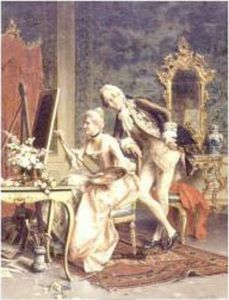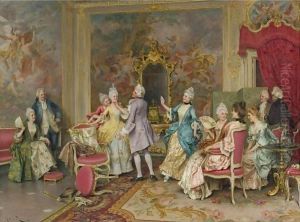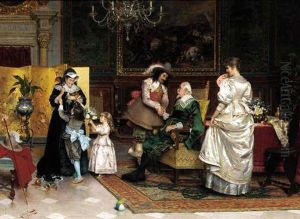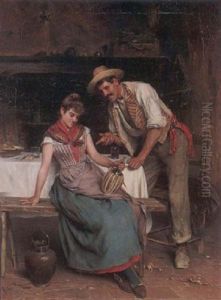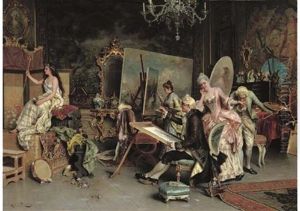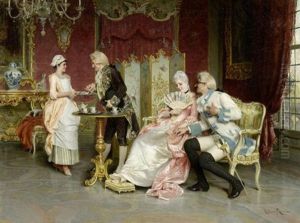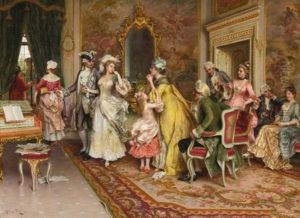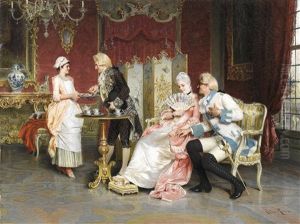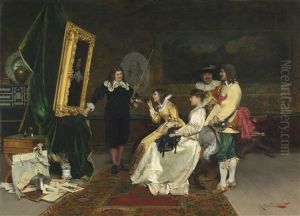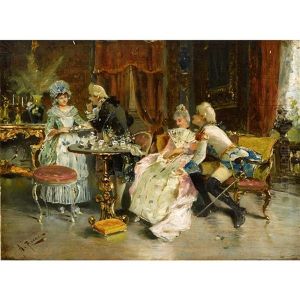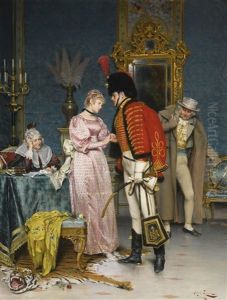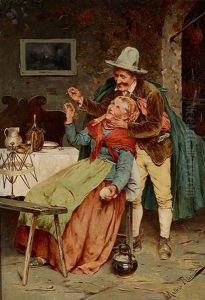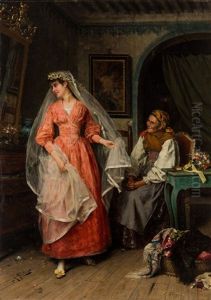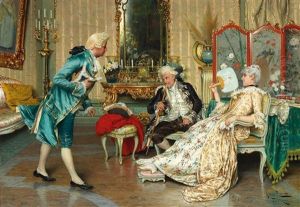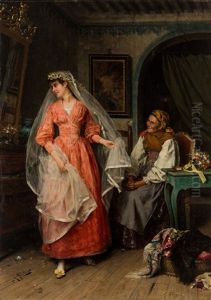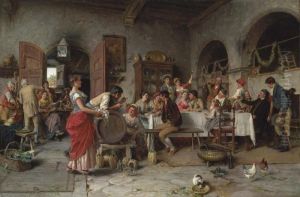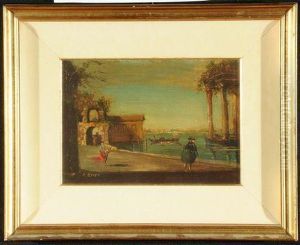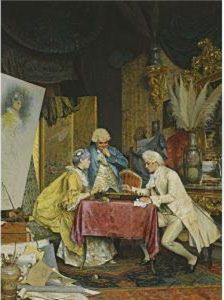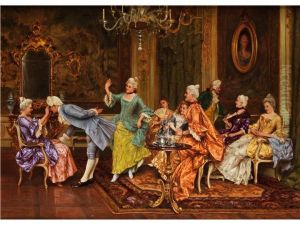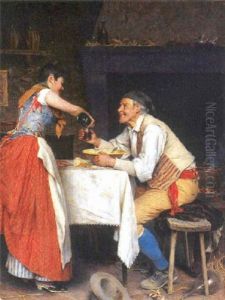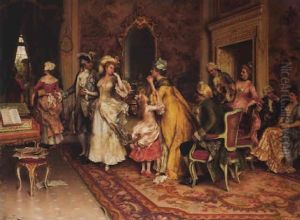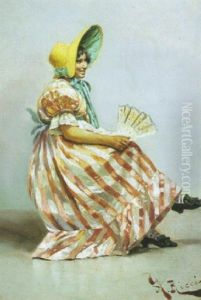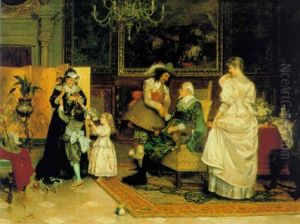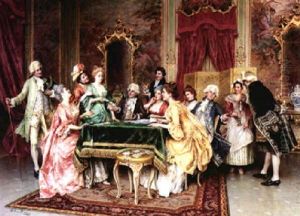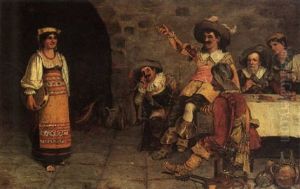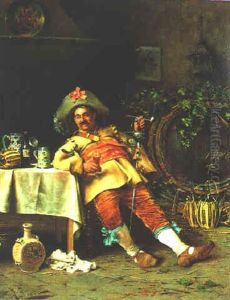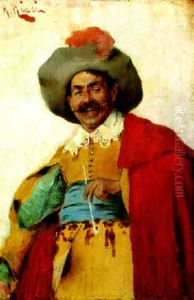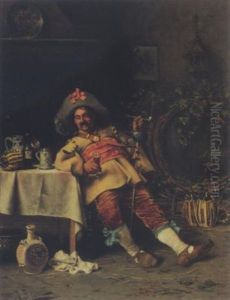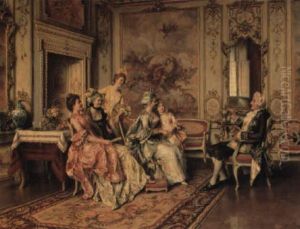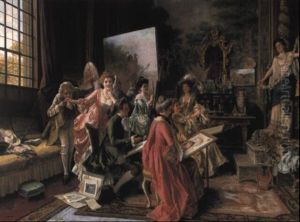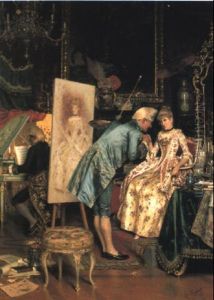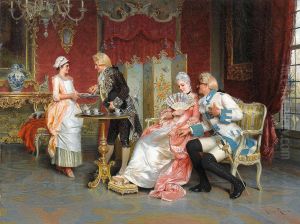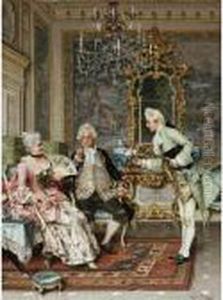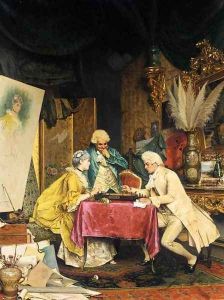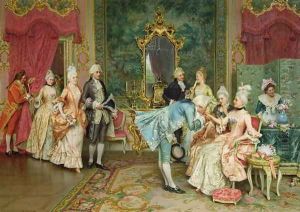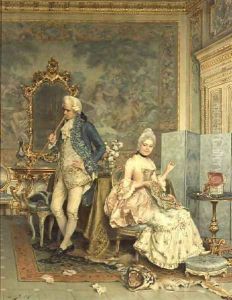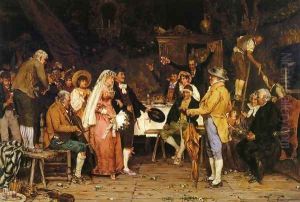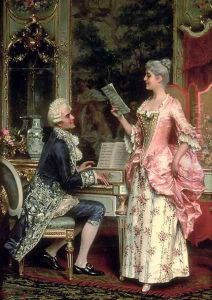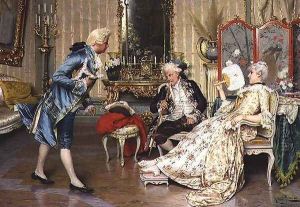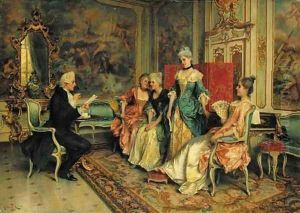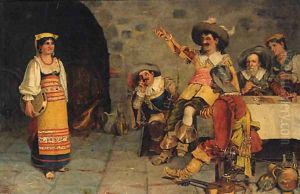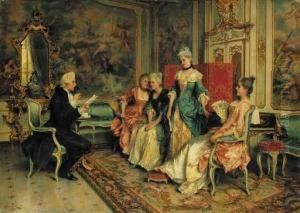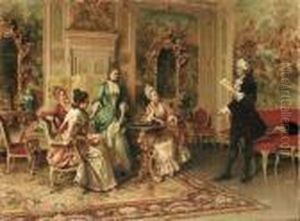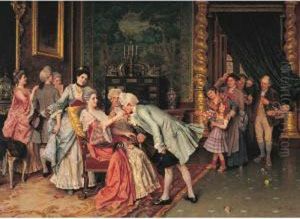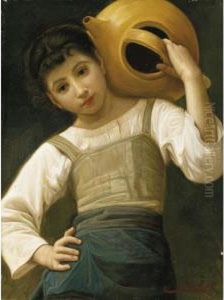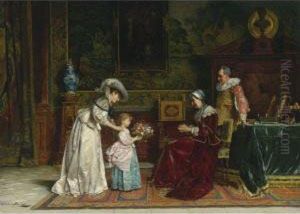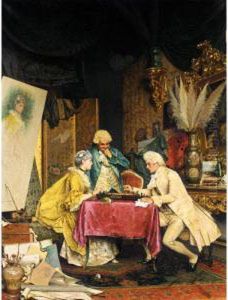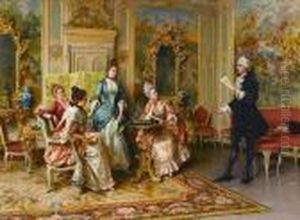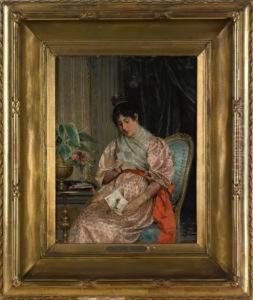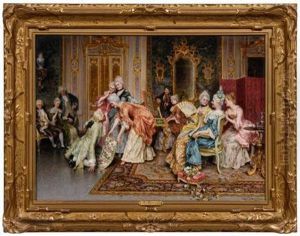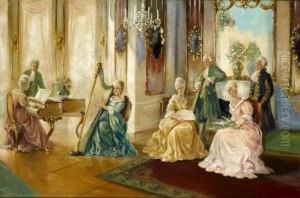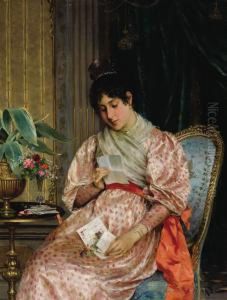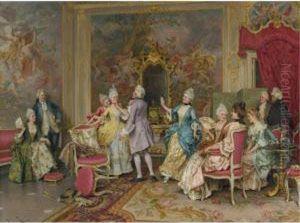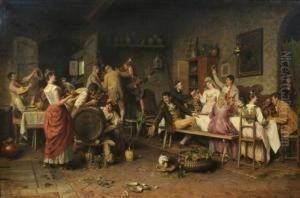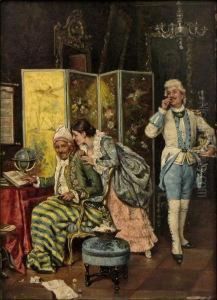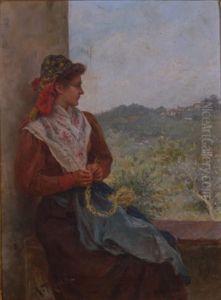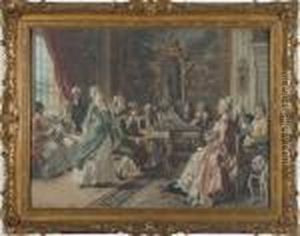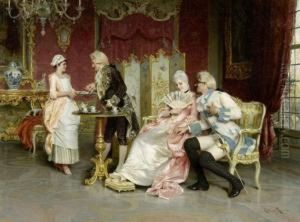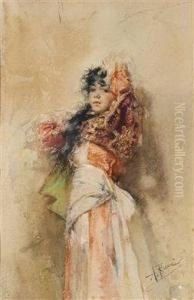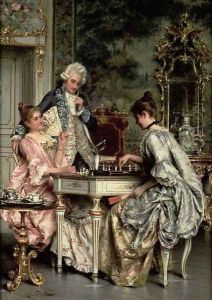Arturo Ricci Paintings
Arturo Ricci was an Italian painter, best known for his elegant genre scenes of the life of the bourgeoisie during the late 19th century. Born on September 27, 1854, in Florence, Italy, Ricci developed an interest in art at a young age and was initially trained by his father, who was also a painter. His father's guidance provided him with a strong foundation in the fundamentals of painting.
Ricci furthered his artistic education at the Academy of Fine Arts in Florence, where he was influenced by the works of the old masters. He was particularly drawn to the richness and attention to detail found in the works of the Renaissance artists. Ricci's early works were primarily historical and classical in nature, reflecting the academic style of painting that was prevalent at the time.
As his style evolved, Ricci became recognized for his genre paintings depicting the leisurely activities of the upper classes. His works often featured sumptuously dressed women in luxurious interiors or genteel outdoor settings, capturing the essence of the Belle Époque. Ricci's paintings are characterized by their vibrant colors, intricate detail, and a certain lightness of touch, which gave his scenes a charming and idyllic quality.
Arturo Ricci's work was well received during his lifetime, and he exhibited at various national and international exhibitions. He was particularly popular among collectors in Italy, as well as in other parts of Europe and America, where there was a growing appreciation for genre paintings that provided a glimpse into the life of the European elite.
Ricci's art did not only reflect the opulence of the era but also served as a visual documentation of the fashion, interior design, and social customs of the time. Despite the changing trends in art, with the rise of modernism and avant-garde movements, Ricci remained committed to his style and continued to produce works that appealed to his clientele.
Arturo Ricci died on January 25, 1919, in Florence. His works remain in private collections and museums around the world, appreciated for their elegance and historical value. Ricci's contribution to genre painting has ensured that he remains a respected figure in the history of 19th-century Italian art.
